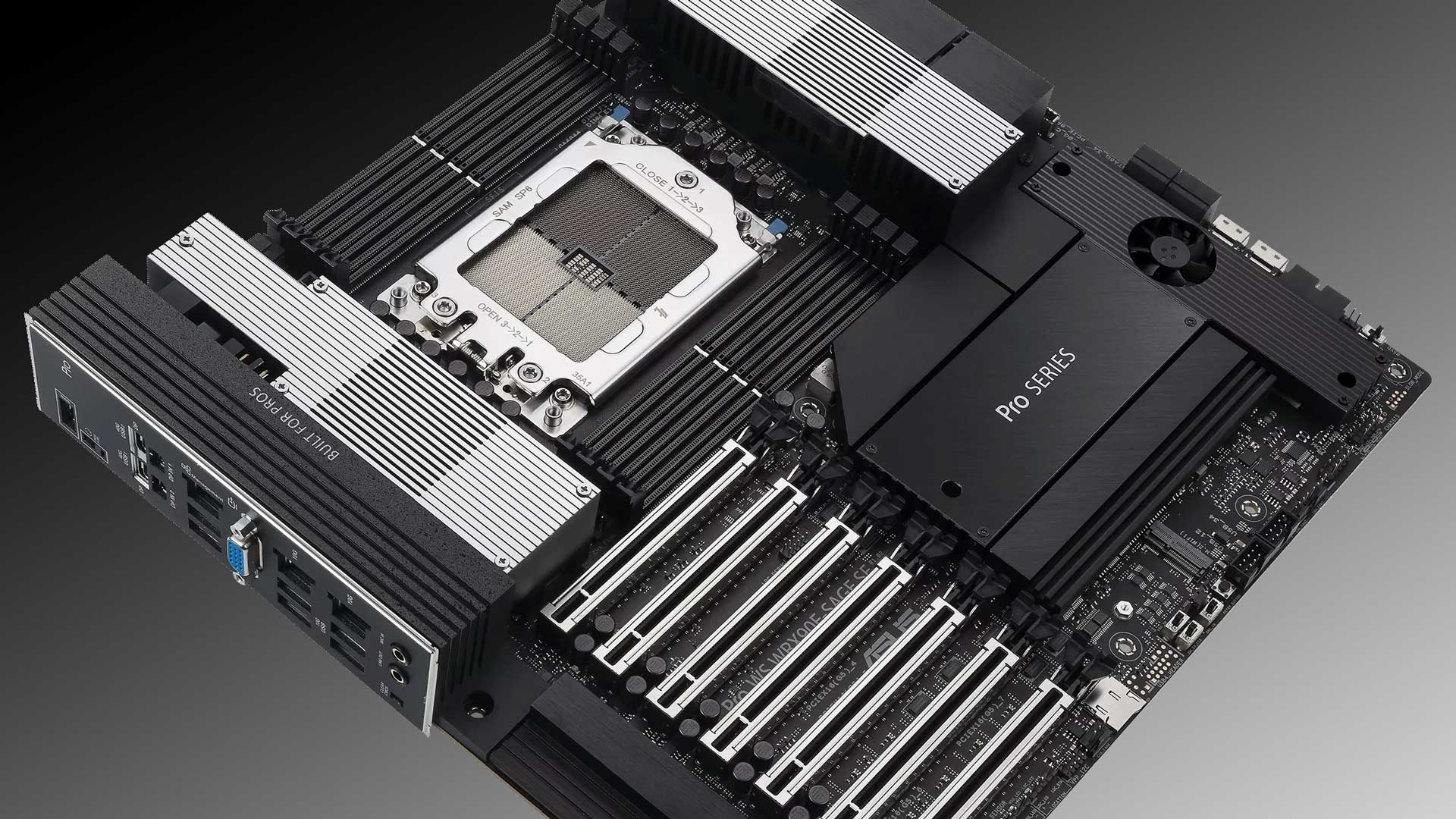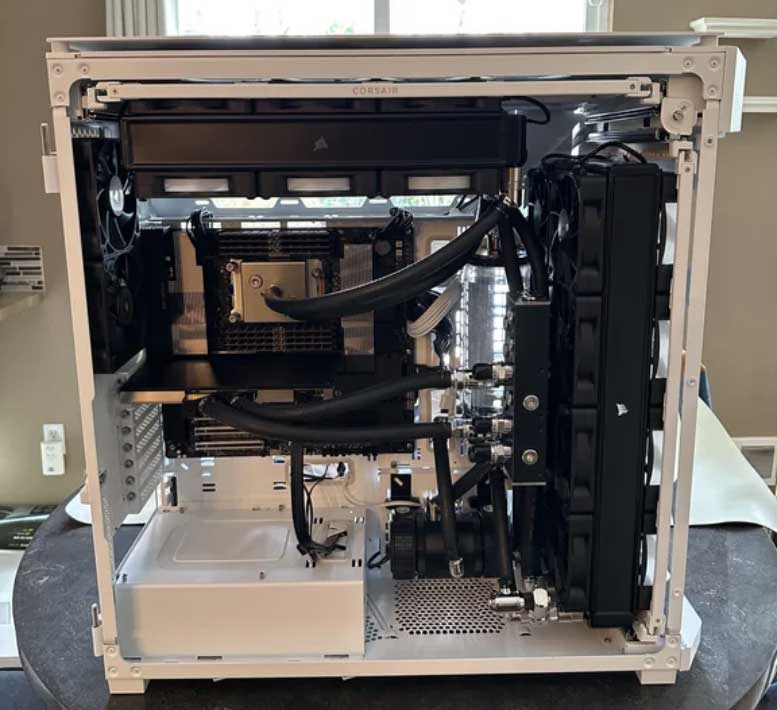Desperate PC DIYer appeals for help after spending $20,000 on a build that doesn't work despite returning multiple parts – misfortune began with a failed BIOS update attempt
Powerful Threadripper and twin RTX 4090 system fails to take off.

A 3D graphics professional has been having great difficulty with a pricey DIY PC build. Redditor joel_motion’s purportedly $20,000 PC includes potent performance components such as a $4,000 AMD Ryzen Threadripper Pro 7975WX, twin ~$2,500 Zotac RTX 4090 graphics cards, and luxuriant amounts of RAM (512GB). However, after a BIOS update went wrong, the Redditor hasn’t been able to boot the system successfully, halting at Q-Code 92. Despite RMAing multiple suspected components, including the motherboard, this error persists.

Let’s first look at the timeline of events for some clues, which may shine a spotlight on the root cause of the issue. The system seems to have been initially assembled at the end of 2024. Joel_motion built the system sans-case for initial testing, which proved successful, and then built it into his Corsair 9000D Super Full-Tower case. This still worked fine.
The Redditor noticed they needed to update the Asus Pro WS WRX90E-SAGE SE motherboard to fix an incompatibility issue with one of the NVMe SSD drives in the system. According to the social media post, they used "the BIOS tool" to install the update, rather than the motherboard’s BIOS flashback feature. During the process, something bad happened. “After it hung on the BIOS update, I had to power it down,” notes the Redditor.
Q-Code 92
From here on in, we note that joel_motion faced an incurable case of Q-Code 92 errors. Naturally suspecting the motherboard – it was the only ‘change’ between error free computing and the current sticky situation – the Redditor was lucky enough to be inside the product RMA window. However, after receiving a “used/refurbished replacement” from Asus, and a subsequent rebuild, the exact same error popped up…
Joel_motion went through swapping one suspected component after the next. They moved through “motherboard #2, CPU #2, and GPU #2, and it's still not working.” Then they cajoled Asus into sending motherboard #3 (new this time, apparently). Then tried building afresh with new RAM and a new PSU. Error Q-Code 92 persisted.
“Along the way, I have experimented with countless tries of RAM placement, clearing the CMOS, Flashbacking the BIOS to different versions, and have made sure to not have any peripherals or Drives plugged in,” adds the Redditor, exasperated. So, at this point, they turned to the PCBuild subreddit to ask the community for help with their “$20k paperweight.”
Begin again, with the basics
When troubleshooting cases like this, seasoned PC tinkerers and repairers often strip a system down to the bare minimum required components to POST and reach the board maker's splash screen, and then they can hit a key to enter the BIOS setup. In this case, that would be a success, as it would put Q-Code 92 in the rearview mirror.
Get Tom's Hardware's best news and in-depth reviews, straight to your inbox.
As the Threadripper doesn’t have an iGPU, a graphics card will need to be added to meet the minimum level of components. To begin, we would start at the test bench stage again, with everything unplugged from the motherboard. Then follow the procedure to clear the CMOS, install the CPU, add a stick of RAM, slot in the graphics card, rest a CPU cooler on the Threadripper with a little paste (for now), and connect up the motherboard and GPU power to the PSU. Plug in the monitor and a keyboard/mouse. You should now be able to power on by bridging the motherboard power pins header with a conductive item, such as a screwdriver tip.
If the system doesn’t work in this minimal config, as in it gets the same error, you have a lot fewer variables to consider. PC repairers and enthusiasts with a wealth of spare parts at their disposal have it easier. They can often A/B test the various basic parts that may be causing trouble with ‘known good’ ones to find the error culprit. The rest of us have to hope the stripped-back testing points to one or another component being the root of the error, so we can arrange a return and wait for the new component to arrive and solve the issue.
As Q-Code 92 points to a PCI Bus initialization issue, it doesn’t really narrow down the culprit very precisely. So, we don’t have definitive answers here. However, we hope that Joel_motion can find a way out of their $20K conundrum via the back-to-basics troubleshooting steps outlined above.
Somehow getting access to more components to A/B test would be a bonus for the Redditor. But if that isn’t possible, and they feel like they are at a dead end, it might save a lot of time and stress to hire a well-reviewed local repairer to fix up the system. In effect, the 3D graphics professional would then trade their time to offset any PC troubleshooting and repair costs incurred by an individual or firm with the resources to efficiently pinpoint and fix their Q-Code 92 error.
If you are thinking of starting a new PC build, please take the time to go through our How to Build a PC guide, which is regularly updated and includes time-tested hints and tips.
Follow Tom's Hardware on Google News to get our up-to-date news, analysis, and reviews in your feeds. Make sure to click the Follow button.

Mark Tyson is a news editor at Tom's Hardware. He enjoys covering the full breadth of PC tech; from business and semiconductor design to products approaching the edge of reason.
-
jvmb I recently was in a very similar situation.Reply
Eventually I found the culprit to be the memory stick used to update the bios, updating with a corrupted bios image. Switching to another memory stick and reflashing the bios fixed the problem. -
Ralston18 Q-Code 92 being "PCI Bus initialization is started" - correct?Reply
"The Redditor noticed they needed to update the Asus Pro WS WRX90E-SAGE SE motherboard to fix an incompatibility issue with one of the NVMe SSD drives in the system."
What was the original/specific "incompatibilty issue"?
What NVMe SSD? What other drives are installed? Make, models, configuration?
What about references to the Motherboard's User Guide/Manual:
Motherboard User Guide/Manual
Just curious..... -
VizzieTheViz I’ll happily build my own machine for gaming, but the machine I earn my money with always comes from a supplier with a support contract just to avoid this sort of thing.Reply
Having your pc broken down for days is way WAY more expensive than paying some more for a pre built and then paying some more for a support contract. -
FoxtrotMichael-1 It sounds like the particular builder is in over their head and panicking. PCs aren’t magic - they’re machines. You simply keep isolating and testing components until you figure out what’s going on. At this point there’s either something on the bus that’s bad or the BIOS flash went wrong. The next thing I’d try is to remove all the drives from the system and see if you can get it to POST. I would not suspect that the main board or anything that’s already been RMA’d is the culprit at this point. Heck, I’d try to POST with a different power supply even - you just never know.Reply -
Zerk2012 Not a clue why he would trust Asus to send him back a working board.Reply
You don't build a 20K work PC you pay extra and buy one. -
ezst036 I don't understand why he didn't just use the built in BIOS firmware upgrader.Reply
I still always try to stay away from BIOS updates anyways but those built in upgraders are wonderful. No longer having the need for making a boot USB and then typing in a bunch of commands. Yikes. Just go into BIOS and select the file on disk. It's like using Office.
But 3 boards in a row with the same issue is super weird. Must have been one of the RAM sticks cause you gotta have at least one.
And that NVME drive that caused all of the initial problems would've been in the trash by now for me. -
JarredWaltonGPU This is why updating a BIOS isn't always "safe" — things can and do go wrong at times, even for the most experienced among us. I had a Gigabyte (or maybe it was MSI?) board back in the Ryzen 7 2700X days that killed the 2700X when I updated the BIOS. The flash appeared to go fine as well, and swapping in a different AM2 chip showed that everything else was working. I ended up having to replace the CPU.Reply
The biggest failure points, in any build, are usually (in order of potential):
Motherboard
RAM
PSU
CPU
GPU
SSDThat's assuming the problem isn't just "user error," which is actually the most common problem in my experience. But the fact that this builder tried replacing the CPU and GPU before trying different RAM is interesting. If I had to guess, it would be that the BIOS update ended up with an unstable RAM voltage and possibly fried one or more of the sticks — assuming it's the RAM, which at this point seems like the only real possibility remaining. -
Alvar "Miles" Udell Had this issue before with an ASUS Crosshair III Formula back in the day, except it just stopped working out of the blue. Sent it back 3 times and they said it was fine. Finally yeeted it and bought a new board, everything worked fine. It was then I stopped trusting ASUS.Reply
But to the point of the article: he used "the BIOS tool" and turned his system off during the update, who knows what "the BIOS tool" did.
And I agree with the above comments that I'd you're going to spend a fortune on a proper workstation you spend a little more and get one from a workstation builder. You might skip things like extra drives and RAM, which you add yourself later at a lower price, but those often are sold with on site repair warranty included so downtime is minimal, and some, like from System76, come with elegant custom cases.